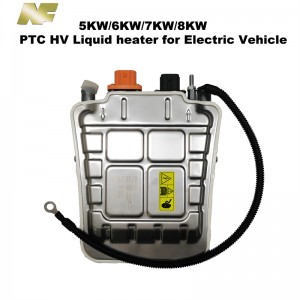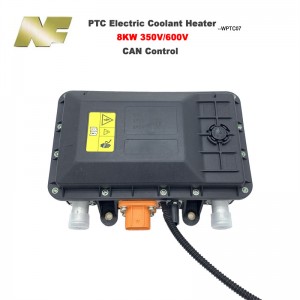The automotive industry is seeing a rapid increase in the number of vehicles equipped with high-voltage heaters, especially high-voltage PTC (positive temperature coefficient) heaters. The demand for efficient cabin heating and defrosting, improved passenger comfort, and the increasing popularity of electric and hybrid vehicles are driving the growing demand for high-voltage heater automotive systems. Let’s delve into the details of this growing trend.
High voltage heater automotive system:
High-voltage heater car systems are designed to provide fast heating and efficient defrost inside your vehicle. They utilize advanced technology to convert electrical energy into heat by incorporating high-voltage PTC heaters. These heaters are highly efficient and offer several advantages over traditional heating systems.
The increasing popularity of electric and hybrid vehicles:
The market for electric and hybrid vehicles has seen significant growth over the past few years. As consumers increasingly choose environmentally friendly modes of transportation, automakers are focusing on developing electric and hybrid vehicle models. The high-voltage heater car system integrated in these vehicles helps improve their performance and appeal, providing an optimal driving experience even in adverse weather conditions.
Advantages of high-voltage PTC heaters:
High-voltage PTC heaters are the first choice of automobile manufacturers due to their many advantages. Firstly, they offer rapid heating and defrosting functions, ensuring minimal waiting time for passengers. In addition, they are highly energy efficient and consume less electricity than traditional heating systems, which helps optimize the vehicle's battery usage.
In addition, the high-voltage PTC heater provides improved temperature control for better cab comfort. They also eliminate the need for complex coolant systems, reducing vehicle weight and manufacturing costs. These advantages make high-pressure PTC heaters an attractive option for automakers and consumers.
Growing market demand:
The global high-voltage heater automotive systems market is experiencing significant growth. According to market reports, the market size is expected to reach X billion US$ by 20XX, growing at a CAGR of X% during the forecast period. This surge is mainly attributed to the increasing popularity of electric and hybrid vehicles, as well as growing demand for energy-efficient heating solutions.
Cooperation and technological advancement:
To take full advantage of growing market demand, several automotive companies are establishing strategic collaborations and partnerships. These collaborations aim to combine expertise and resources to develop innovative high-voltage heater automotive systems.
Furthermore, continued technological advancement in high-voltage heater automotive systems is driving market growth. Companies are investing heavily in research and development to improve the efficiency and performance of these systems. This includes improving temperature control, optimizing power consumption, and integrating smart features to enhance the user experience.
Safety issues and regulations:
Since high voltage heater automotive systems involve electrical components, safety is of the utmost importance. Automakers proactively address safety issues by implementing strict safety measures and adhering to recognized standards and regulations. These measures ensure the reliability and safety of high-pressure heater systems, increasing consumer confidence and promoting wider adoption.
in conclusion:
The growing demand for high-voltage heater automotive systems, especially high-voltage PTC heaters, is revolutionizing the automotive industry. As the market for electric and hybrid vehicles continues to grow, the need for efficient cabin heating and defrosting has become critical. High-voltage PTC heaters provide reliable, energy-efficient and cost-effective solutions to meet these requirements. Through continued technological advancements and strategic collaborations, automotive companies are driving innovation in this area, ultimately enhancing the overall driving experience in all weather conditions.




Post time: Oct-13-2023




